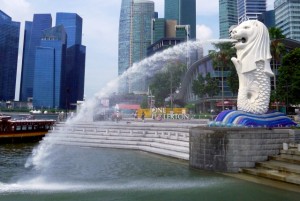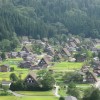Phrasing “〜がある(〜ga aru)” and “〜がいる(〜ga iru)” with native Japanese voice (N5 level)
Let’s study phrasing “〜がある(〜ga aru)” and “〜がいる(〜ga iru)” in this post.
This is N5 level in JLPT. JLPT is
(JLPT is short for Japanese Language Proficiency Test, 日本語能力試験 and recognized passport to show your Japanese language ability. You may take test in July and December.)
Phrasing “〜がある(〜ga aru)” and “〜がいる(〜ga iru)”are often used in conversation and sentences in many kinds of documents.
“〜がある(〜ga aru)” is equivalent of “there is/are” in English, in case that subject is “inanimate object”. On the other hand, “〜がいる(〜ga iru)” is equivalent of “there is/are” in English, in case that subject is “something alive such as animal, human etc”
Some non-Japanese wrongly use in vice-verse way.
Phrase “〜がある(〜ga aru)”
Main usage is “there is/are” in English, in case that subject is “inanimate object”.
For example, “inanimate object” is car, country, ship, building, fruits etc.
Example for “〜がある(〜ga aru)”
A) 駐車場にたくさん車がある。
(Chusyajyou ni takusan kuruma ga aru)
(There are many cars at parking lot.)
⇒In this sentence, inanimate object, car exists in parking lot. “〜に” is often used with “〜がある(〜ga aru)”. “〜に” indicates location that inanimate object exists.
B) テーブルの上に、いちごとバナナがある。
(Table no ueni ichigo to banana ga aru)
(There are strawberry and banana on table.)
⇒In this sentence, inanimate object, apple and banana exist on table. “〜に” indicates location that inanimate object exists. In this case, Apple and banana exist on table.
Formation for “〜がある(〜ga aru)”
Usually this phrasing is used at end of sentence with inanimate object on subject
Phrase “〜がいる(〜ga iru)”
Main usage is “there is/are” in English, in case that subject is “something alive”.
For example, “something alive” animal, human etc.
Example for “〜がいる(〜ga iru)”
C) 東京(渋谷)の交差点には、たくさんの人がいる。
(Tokyo Shibuya no kousaten niha takusan no hito ga iru)
(There are many people at crossroad in Shibuya, Tokyo.)
⇒In this sentence, something alive, human exists in Tokyo. “〜に” or “〜には” is often used with “〜がいる(〜ga iru)”. “〜に” or “〜には” indicates location that something alive exists.
D) シンガポールには、マーライオンが4匹いる。
(Singapore niha Merlion ga yon hiki iru)
(There are 4 Merlions in Singapore.)
⇒In this sentence, four Merlions exist in Singapore. Yes, it is arguable that Merlion is alive or not. But I think Merlion is alive as it’s legendary animal. As you may not know, there are 4 Merlions in Singapore!
You may use separately “〜が~いる” like this sentence.
Formation for “〜がいる(〜ga iru)”
Usually this phrasing is used at end of sentence with something alive on subject
How was this post?
If you like this or feel this is useful, please share on Facebook and retweet on Twitter!
If you wanna join Leo Sensei’s group on Facebook, click Facebook mark on top or bottom and send friend request to me. You can get updated information and ask me freely about Japanese language and culture and so on.






















